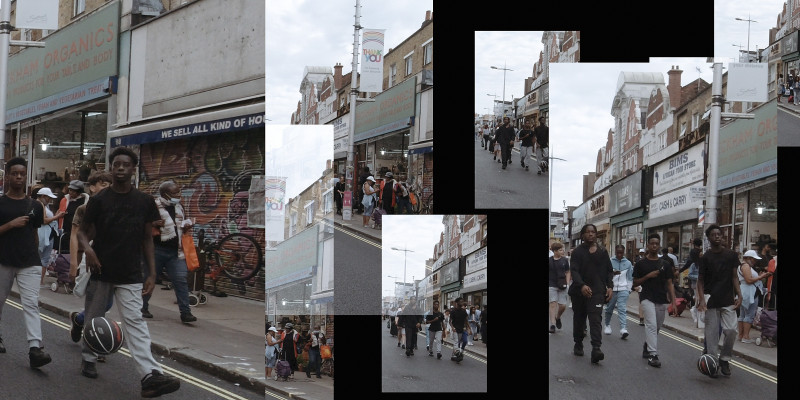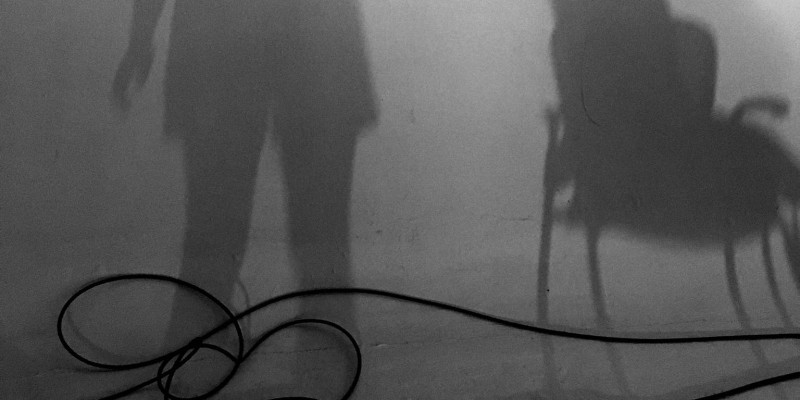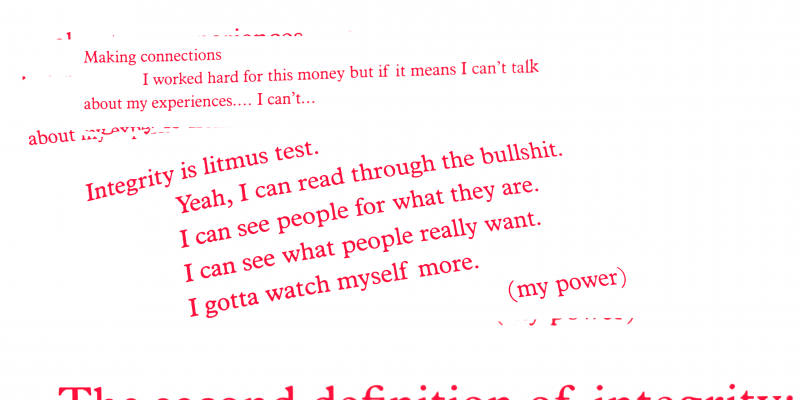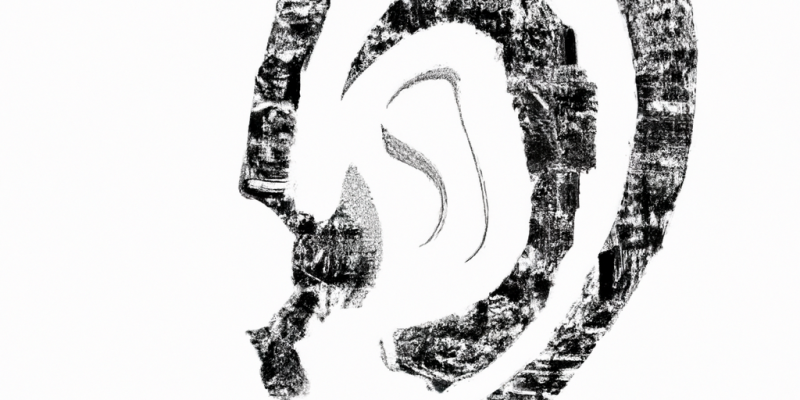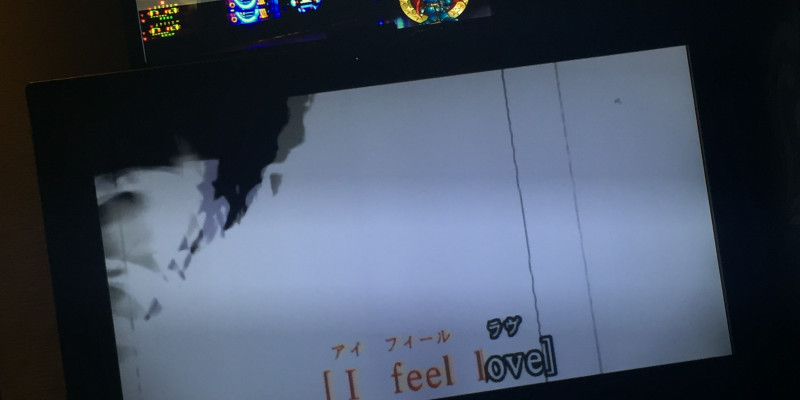
Dynamics of Power Dynamics
How are power dynamics evidenced through loudness in sonic storytelling?
In sonic storytelling (be it film, games, VR or audio narratives), audiences expect to be immersed. Rather than truth and knowledge, they expect a sense of wonder delivered through sensorial and emotional engagement. But while it seems clear that the audience's relationship with such narratives is an aesthetic experience rather than an epistemological pursuit, we tend to forget this. We tend to forget that what we call reality is that narrow range, 'reality for us' (somehow echoing Kant's "das ding für mich"): a mediated reality. And much more so in the case of creative works like sound narratives, in which there is intentionality behind every decision of the process.
It is through knowledge of the art-form and skilful weaving of networks of symbols, that creatives can dictate the terms of storytelling and thus exert their power over the audience. To be able to engage in the experience of a film, we, the audience, need to suspend our disbelief and put ourselves at the mercy of the film-making team, making the world they present to us, the reality that we decide to inhabit for the duration of the work. However, these power relationships can only exist through the willing acceptance (knowingly or unknowingly) of them upon whom that power is exerted.
Conversely, if the audience is aware of how the narrative has been crafted, if they consciously ponder upon plot points, aspects of the mix and elements of sound design, that dynamic shifts, emancipating the audience but breaking the spell. Thus, in line with Foucault's studies of power, it becomes a moral responsibility of filmmakers, educators and academics to empower the audience through knowledge, so that the aesthetic experience becomes an act of wilful suspension of disbelief rather than passive (and ignorant) consumption of meaning that subjugates them to the power of hegemonic entities.
But how much do we want to free ourselves from that power being exerted upon us?
Without submitting ourselves to it, there is no aesthetic experience and much like babies swaddled in the comfort of a tight blanket, we need this comfort and its soothing oppression.
When thinking of power in the context of sound, stemming from our everyday experience of the world around us, one of the first elements that comes to mind is loudness: muscle cars, construction machinery, weapons. In the asphalt jungle, the hierarchies of dominance seem to be defined by those who wield loudness. In conversation, this scale seems to find a cultural and social correlation with power relationships. Louder voices tend to be associated with those who exert power or seek to do so. In contrast with the silence of those who listen, the voices of the politician, the general and the dictator brandish sound to establish their position.
But mere use of loudness to exert authority over the audience's emotions (illustrated by the cacophony of a battle scene or the violence of a jump-scare), is just what sits at the surface. It is evident and puts the mechanisms of hegemony under the spotlight, much like what Michel Foucault describes as the methods of implementation of sovereign power.
But after further analysis into the inner workings of loudness, it becomes apparent that the 'loud' cannot exist without the 'quiet' (much like the opposing pairs put forth by Levi-Strauss in "The Raw and the Cooked"). Following on from this, if the loud can't exist without the 'quiet', does it also mean that power can be exercised by wielding silence?
In film, as well as in real life, those who command silence can exercise power in subtle, more refined and inconspicuous ways. But it is not the imposition of silence upon others that we refer to. That would be like yelling to win an argument: yet another form of overt coercive power. What we're referring to is the calm and quiet tone of those who don't need to spend energy to demonstrate that they are in control. The eerie voice of Hannibal Lecter, "HAL 9000" and the robot in "I Am Mother". It's the silence of those who can afford it.
In sound narratives, depending on how it's used, if it's relative or absolute, what it's connected to, how one arrives to it and how one returns from it, silence can
- Anticipate and create uncomfortable tension through absence
- It can illustrate a slowing down of time after important events
- It can make the audience feel threatened by denying access to important information
- It can create suspense by extending the passage of time
- It can direct attention towards events, characters or symbolic elements
- It can exaggerate to illustrate hyper-real perception of the sonic world
- It can isolate a character and distance them from the world by highlighting that which
is not normally audible
- It can deny resolution
- It can express the emotional intensity that the loudest of sounds won't even be able to reach
But as before, and arriving full-circle to the point from which we started, silence can't exist without sound and 'quiet' can't exist without the 'loud'.
These landmarks of power struggles in sonic narratives are defined by saliency (that which breaks our expectations and commands our attention) and it is contrast that gives rise to power: the greater the opposition, the greater the power. The key thus, is not loudness or silence but dynamic range; the scale and contrasts of levels that occur throughout a creative sound piece: from the quietest perceptible sounds, just above the noise floor, to the loudest ones that aggressively crash against the limits of the medium, creating distortion or clipping.
But even after dissecting these concepts, is this polarity all that there is when understanding the networks of symbols that we referred to at the beginning? Fortunately not. Sound and narrative are complex and infinite. And the polarity between loudness versus silence is but one of the many relationships between symbols in semantic networks of storytelling. Conversations need to be had around other terms that define narratives, such as the notions of duration, pitch, timbre, consonance, dissonance, rhythm and pace; about the semantic connections between components of layered sounds and images that they're synchronised to (like the principles behind the Kuleshov Effect).
When ready, let's listen. In our own terms.
